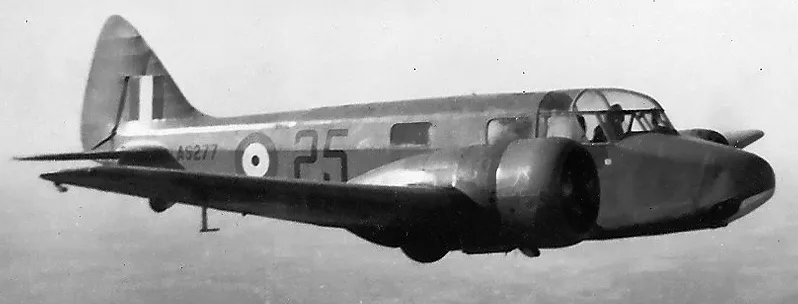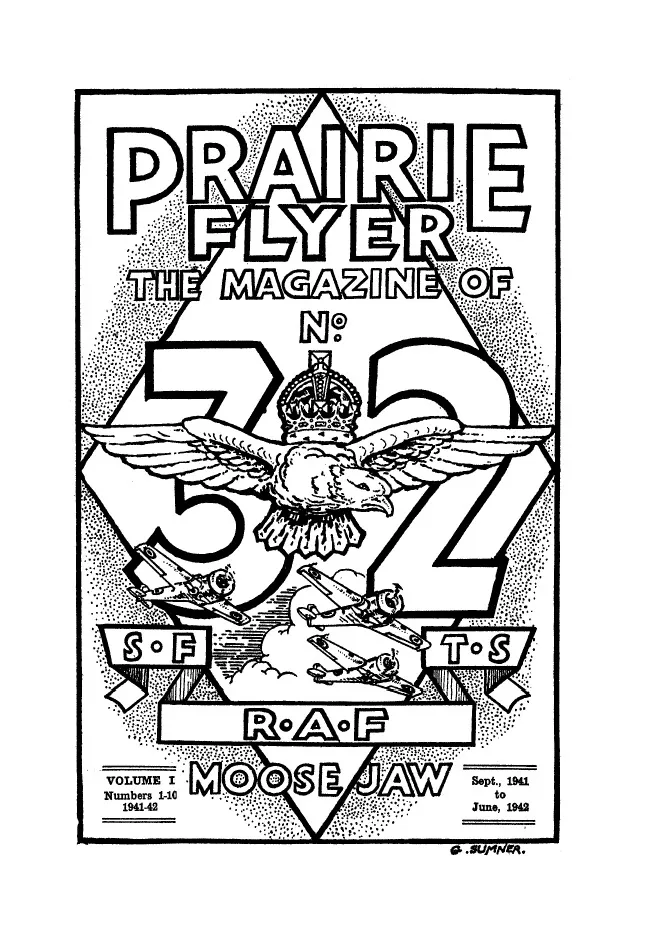Blindell, David Victor Francis (Leading Aircraftman)
Killed in Flying Accident 1943-August-11


Birth Date: 1924
Born:
Parents: Son of Victor and Emma Blindell, of Luton, Bedfordshire, England.
Spouse:
Home:
Enlistment:
Enlistment Date: unkown date
Service
RAFVR
Unit
32 SFTS- Service Flying Training School (RAF)
Base
RCAF Stn. Moose Jaw, Saskatchewan
Rank
Leading Aircraftman
Position
Service Numbers
1607365
Crew or Other Personnel
Oxford AT483
Oxford serial: AT483

Airspeed A.S. 10 Oxford Mk. II, RCAF (Serial No. AS277), 25, in flight over Saskatchewan, 1942.
The Airspeed AS.10 Oxford was a twin-engine monoplane aircraft developed and manufactured by Airspeed. It saw widespread use for training British Commonwealth aircrews in navigation, radio-operating, bombing and gunnery roles throughout the Second World War.
The Oxford was developed by Airspeed during the 1930s in response to a requirement for a capable trainer aircraft that conformed with Specification T.23/36, which had been issued by the British Air Ministry. Its basic design is derived from the company's earlier AS.6 Envoy, a commercial passenger aircraft. Performing its maiden flight on 19 June 1937, it was quickly put into production as part of a rapid expansion of the Royal Air Force (RAF) in anticipation of a large-scale conflict.
As a consequence of the outbreak of war, many thousands of Oxfords were ordered by Britain and its allies, including Australia, Canada, France, New Zealand, Poland, and the United States. Following the end of the conflict, the Oxford continued to achieve export sales for some time, equipping the newly formed air forces of Egypt, India, Israel, and Yugoslavia. It was considered to be a capable trainer aircraft throughout the conflict, as well as being used a general-purpose type. A large number of Oxfords have been preserved on static display. Wikipedia
Aircraft Images
Oxford AT483
Oxford Mk. I AT483
To No. 4 Training Command on 10 December 1941, for use by No. 34 Service Flying Training School at Medicine Hat, Alberta. With No. 32 Service Flying Training School at Moose Jaw, Saskatchewan when it collided with Oxford AS697 while both were taxiing at Moose Jaw on 24 June 1943 (or 1942?). Category C10 damage to this aircraft, but no injuries. Still with this School when it crashed at 19:20 on 11 August 1943. Failed to gain sufficient airspeed during take off run, lifted off and touched down several times before barely clearing telephone lines at edge of airfield. Aircraft then stalled, flipped over, and dove into the ground 2 miles west of Moose Jaw aerodrome. Investigation revealed port engine plugs had become fouled during prolonged idling prior to the take off. Pilot Officer Roy Wingham and Leading Aircraftman D.V. Blindell, both RAF, died without recovering consciousness. Scrapped at No. 32 SFTS.1941-10-27 Taken on Strength No. 9 Repair Depot 2019-08-20
1943-June-24 Accident: 32 Service Flying Training School Loc: Aerodrome Names: Bragg | Davids | Michielsen | Thompson
1943-August-11 Accident: 32 Service Flying Training School Loc: Aerodrome Names: Blindell | Wingham
1943-10-27 Struck off Strength Struck off, reduced to spares and produce 2019-08-20
Unit Desciption
32 SFTS (32 Service Flying Training School)
Graduates of the EFTS "learn-to-fly" program went on a Service Flying Training School (SFTS) for 16 weeks. For the first 8 weeks the trainee was part of an intermediate training squadron; for the next 6 weeks an advanced training squadron and for the final 2 weeks training was conducted at a Bombing & Gunnery School. The Service schools were military establishments run by the RCAF or the RAF.
There were two different types of Service Flying Training Schools. Trainees in the fighter pilot stream went to an SFTS like No. 14 Aylmer, where they trained in the North American Harvard or North American Yale. Trainees in the bomber, coastal or transport pilot stream went to an SFTS like No. 5 Brantford where they learned multi-engine technique in an Airspeed Oxford, Avro Anson or Cessna Crane.

For more Information on RCAF Station Moose Jaw see here
RCAF.Info - RCAF Station Moose Jaw SK
RCAF.Info - Relief Landing Field Buttress SK
RCAF.Info - Relief Landing Field Burdick SK
RCAF.Info - Relief Landing Field Caron SK